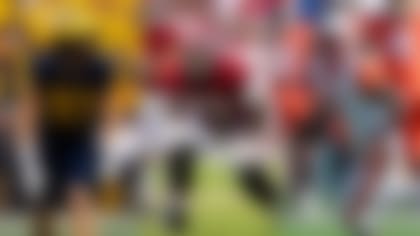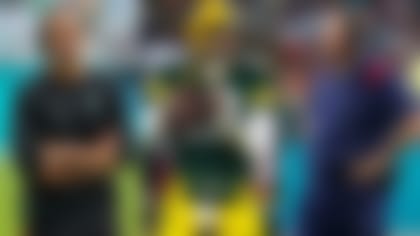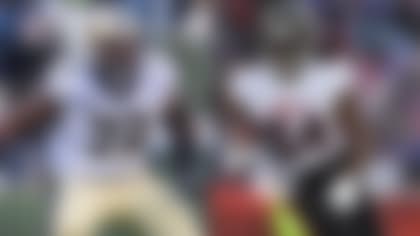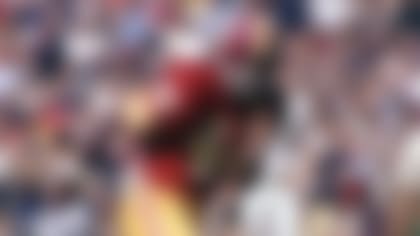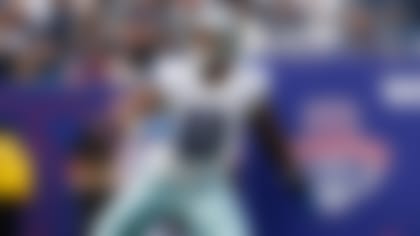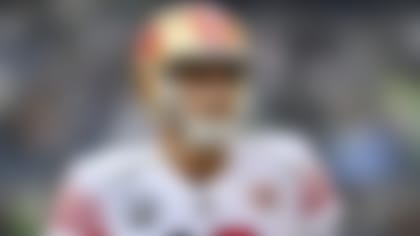In 1961, when I was working for the Dallas Cowboys, we asked 50 college coaches to describe the ideal traits they wanted to see in football players, and from those descriptions, we extracted the common traits that were associated with success at various positions. While every player is an individual, with their own particular strengths and weaknesses, it is possible to project how certain players will perform in the NFL based on the traits they share with players who have proven their ability to thrive as pros.
Over the years, I've also come to realize that the three most important positions on an NFL team are as follows: quarterback, blind-side protector and pass-rusher. This may seem obvious, but it's tough to win if you can't pass the ball, protect the passer -- or stop your opponent from passing the ball. Consider how much Gino Marchetti meant to the Baltimore Colts as far back as the 1950s and '60s. Though sacks weren't yet an official statistic, and teams didn't pass the ball as frequently as they do now, the Hall of Famer was a crucial component of that team, which won back-to-back NFL titles in 1958 and '59.
Thinking about the value of using concrete results to assess hypothetical upside, I've compared five of the top pass-rushing prospects in the 2021 NFL Draft with established pro players who best illustrate the prospects' potential. These comparisons are not intended to be perfect mirror images, nor are they intended to suggest the prospects will definitely become as good as the pros they're being compared to.
(NOTE: Pros are listed with their current NFL teams, total NFL seasons and career sack totals. Note also that, because prospects did not run drills at the NFL Scouting Combine this year, I'm relying on numbers pulled together from pro days, while historical pre-NFL numbers for current pros are drawn from or cross-checked against nflcombineresults.com and Pro Football Reference, unless otherwise specified.)

Pro comparison: Danielle Hunter, Minnesota Vikings (five NFL seasons, 54.5 career sacks).
Oweh's height and weight (6-foot-5, 257 pounds, as measured at Penn State's pro day) are basically the same as Hunter's (6-5, 252), as is his arm length (34 1/2 inches, compared to Hunter's 34 1/3), though Oweh posted a far better time in the 40-yard dash (a blistering, albeit unofficial, 4.36 seconds) than Hunter (still a very fast 4.57), and he also outpaced Hunter in the vertical jump (39 1/2 inches to Hunter's 36 1/2).
Oweh's sack production in his final collegiate season was underwhelming, in that there wasn't any -- he posted zero sacks in six games, though he did leave Penn State with seven career sacks and 13 career tackles for loss. Hunter also finished with just 1.5 sacks in his last season at LSU. However, like Hunter, Oweh heads to the pros with tons of upside. Oweh's football background is relatively limited, and he's still learning how to rush the passer. I wouldn't be surprised if he embarks upon a Hunter-like career trajectory, refining his skills as a rookie and then blossoming a season or two down the road. That said, I do think he'll be more productive than Hunter was in Year 1 (6.0 sacks, one start).
One crucial trait these two players share is competitiveness, without which it would be impossible to succeed, regardless of how well one tests -- and it's why it's safe to bet on Oweh's development and Hunter's ability to reclaim his status as a premier pass rusher after losing 2020 to injury.

Pro comparison: Yannick Ngakoue, Las Vegas Raiders (five NFL seasons, 45.5 career sacks).
Like Ngakoue, Ojulari is a shorter pass rusher (they're both 6-2) whose long arms enable him to function like a taller player. (Ojulari's arms measure 34 3/8 inches, and Ngakoue's measure 32 1/2.) Both players were productive in college, with Ngakoue racking up 13.0 sacks in his final season at Maryland, while Ojulari put up 9.5 sacks and 12.5 tackles for loss at Georgia last season. And both players love to torment opponents with a "cross-chop" move while attacking the quarterback. Ngakoue has only posted one double-digit sack season in the NFL (2017, when he had 12.0), but he's also been consistent over the course of his career, never finishing with less than 8.0 sacks in any given season -- and, of course, he earned a two-year, $26 million deal from the Raiders this offseason. It would not be surprising to see Ojulari produce at a similar level, if not better.

Pro comparison: Robert Quinn, Chicago Bears (10 NFL seasons, 82.5 career sacks).
The 30-year-old Quinn might be coming off a disappointing two-sack season with the Bears, but he was still roaming opposing backfields with regularity as recently as 2019, when he piled up 11.5 sacks for the Cowboys. And early in his career with the Rams, Quinn was one of the best pass rushers in the NFL, accumulating 40 sacks between 2012 and '14, the third-most in the NFL in that span.
The speed Phillips showed off at Miami's pro day -- he ran a 4.56 40 -- is unusual for a player his size (6-5 1/2, 260 pounds) and makes it somewhat challenging to find a suitable pro comparison (especially after I already paired the even speedier Oweh with Hunter). Still, Quinn's pro-day 40 (4.59) wasn't that far off, even if his combine 40 (4.62) was slower. And Phillips' other measurables, including a 1.59-second 10-yard split, a 7.13-second three-cone, a 10-5 broad jump and a 36-inch vertical, are similar to Quinn's (1.61 10-yard split, 7.13 three-cone, 9-8 broad jump, 34-inch vertical). Like Quinn back in 2011, Phillips boasts fairly refined pass-rushing skills heading into the NFL. When he's on, Quinn is a tireless pursuer, often coming from behind the play to sack the quarterback, and Phillips has flashed a similar relentlessness.

Pro comparison: Cam Jordan, New Orleans Saints (10 NFL seasons, 94.5 career sacks).
Jordan looked like a better player than Paye coming out of college, and I'm not sure Paye projects as someone who can be as dominant as Jordan. But Paye shows a similar knack for applying pressure from various spots along the line. In fact, I think Paye would do well to spend more time inside at the next level. I also like Paye as someone who could help clog running lanes.
Neither player hit double digits in sacks in any college season. Jordan started slow with the Saints, registering just one sack as a rookie, but he's become one of the most prolific sack artists in the NFL since then, racking up 93.5 from 2012 to 2020, the fourth-most in the league in that span. Paye's 40 time was significantly faster than Jordan's (4.52 to 4.74), though it should be noted that Paye is also currently significantly lighter than Jordan (261 pounds to 287; I know a nearly 30-pound gap is nothing to sneeze at, but again, the goal of this piece is to put these prospects' potential in context, not find an exact NFL doppleganger). Otherwise, the two players have similar athletic profiles (Paye marked a 35 1/2-inch vertical and 9-10 broad jump, and Jordan had a 31-inch vertical and 9-9 broad jump). It remains to be seen if Paye will develop into the kind of lode-bearing defensive centerpiece Jordan is now.
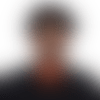
Pro comparison: Jason Pierre-Paul, Tampa Bay Buccaneers (11 NFL seasons, 89 career sacks).
These players aren't exactly alike. The taller (6-7 to 6-4 3/4) Rousseau was a more accomplished college player, demonstrating high-end productivity with a 15.5-sack 2019 season, whereas JPP managed just 6.5 sacks (but 16.5 tackles for loss) at South Florida in 2009. That said, they did post similar 40 times (4.69 for Rousseau, 4.71 for JPP) and vertical jumps (30 for Rousseau, 30.5 for JPP), plus identical broad-jump marks (9-7). The most instructive part of this comparison is the fact that, like the Giants did when they selected JPP 15th overall in 2010, the team that drafts Rousseau -- who opted out for the 2020 season -- will be betting on the raw potential he flashed in one season of major college productivity. JPP was able to make good on the promise he showed as a prospect, racking up 89 career sacks thus far and earning his third Pro Bowl nod just last season as a key member of the Super Bowl-winning Bucs. Time will tell if Rousseau is able to do the same.
Follow Gil Brandt on Twitter.

